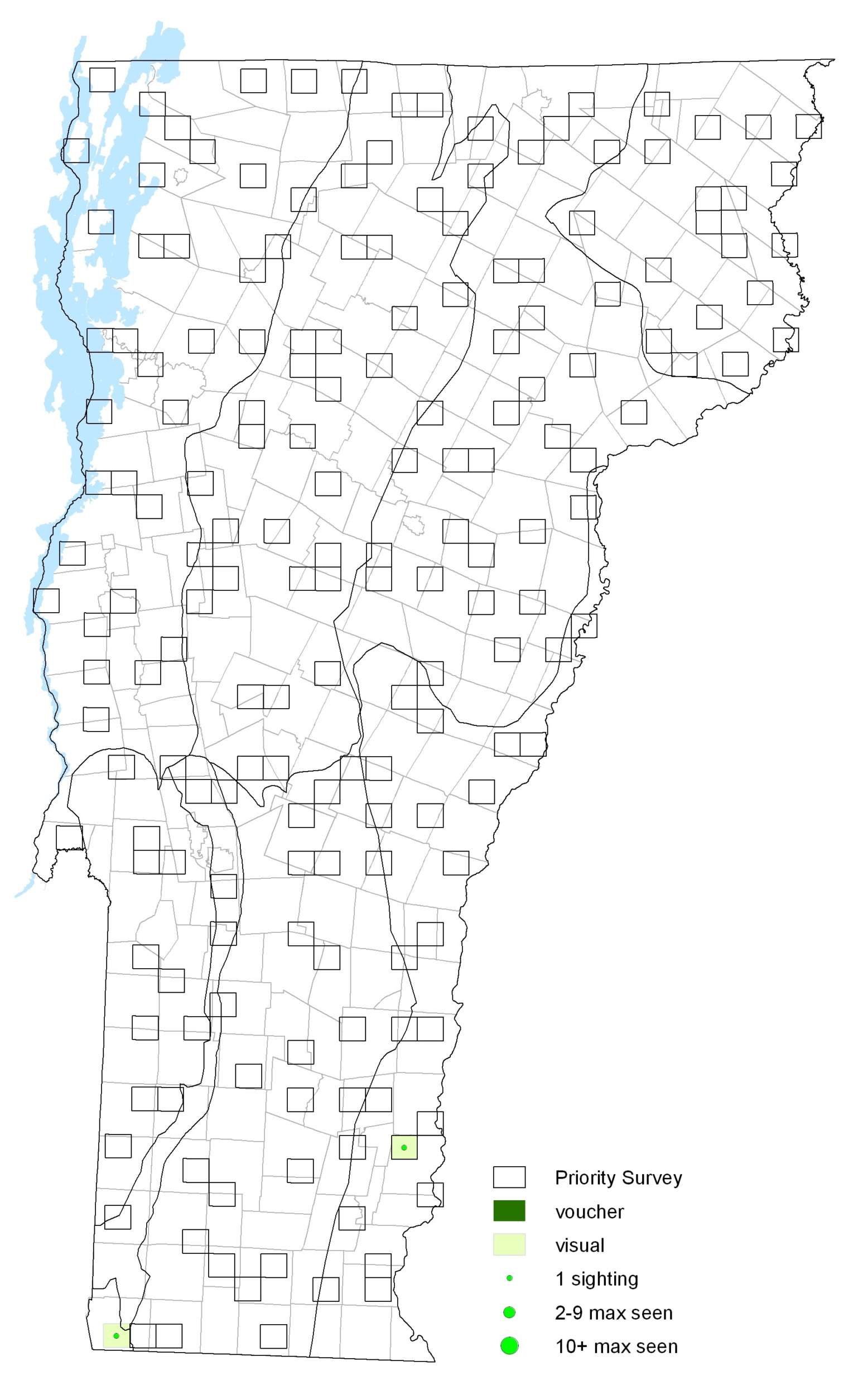Despite appearing to be a small and delicate butterfly, Little Yellows are known to wander, sometimes converging in massive swarms and crossing over the Atlantic as far as Bermuda. It cannot survive winter temperatures in Vermont and is unable to establish breeding populations farther north than southern Connecticut
Identification
A tiny sulphur. Upperside of male forewing yellow with wide black apex. Hindwing with black border. Female yellow or white (rare) with black borders. Both sexes with small black spot in forewing cell.
Conservation Status
Vagrant – very rare
Vermont SNA
Global G5
Flight
A vagrant to Vermont, with only one historic record and two records during VBS. The first record was a specimen in the UVM Zadock Thompson Natural History Collection from 17 September 1969 in Burlington (O. Royce). Other records include a sighting on 29 July 2006 in Windham (J. Holan) and another in Pownal on 2 August 2004 (K. Hemeon).
Distribution and Habitat
North American range- Resident in Costa Rica north to South Texas and the Deep South; seasonally colonizes most of eastern United States and west to eastern South Dakota, central Nebraska, and eastern New Mexico.
Found predominantly in dry and open habitats; open fields, railroads, waste areas and forest edges. Host plants are Wild Sensitive Plant (Chamaecrista nictitans) and Partridge Pea (Chamaecrista fasciculata) and adults nectar from Goldenrods (Solidago) and asters (Symphyotrichum novae-angliae).






